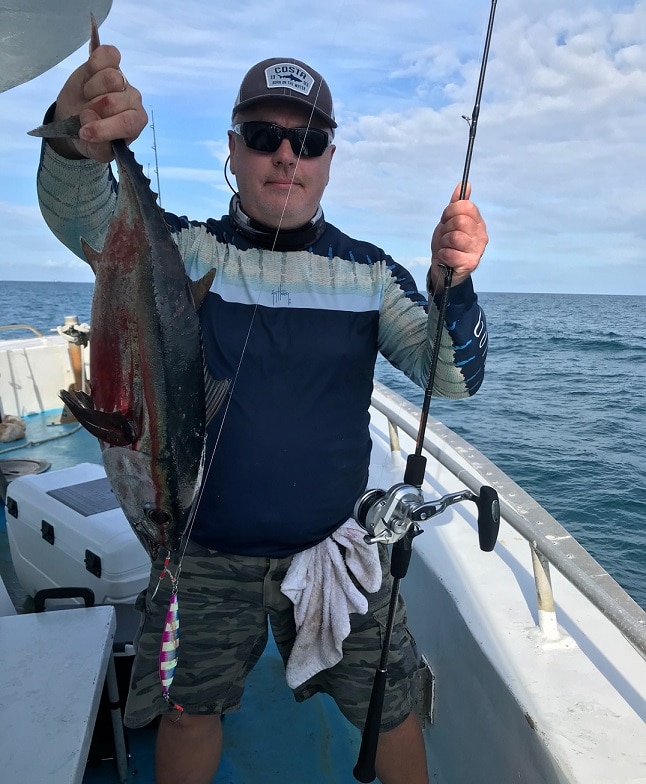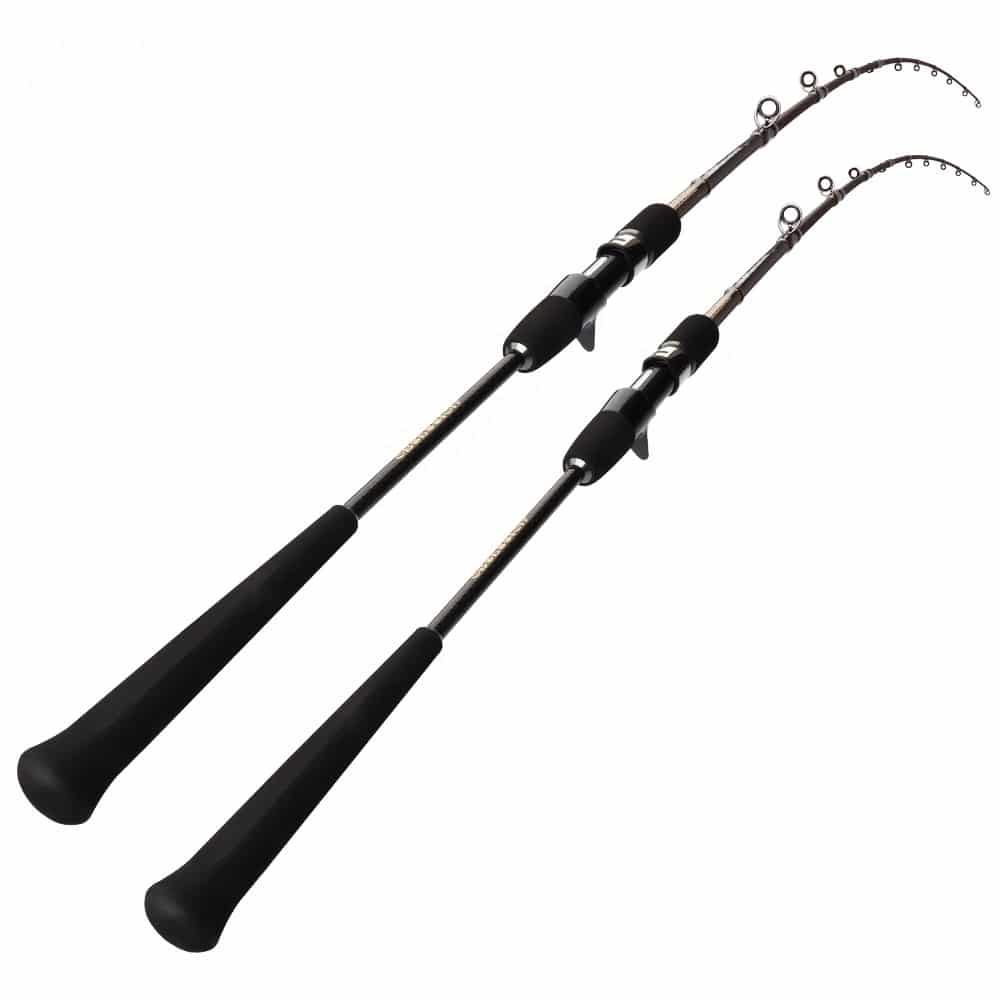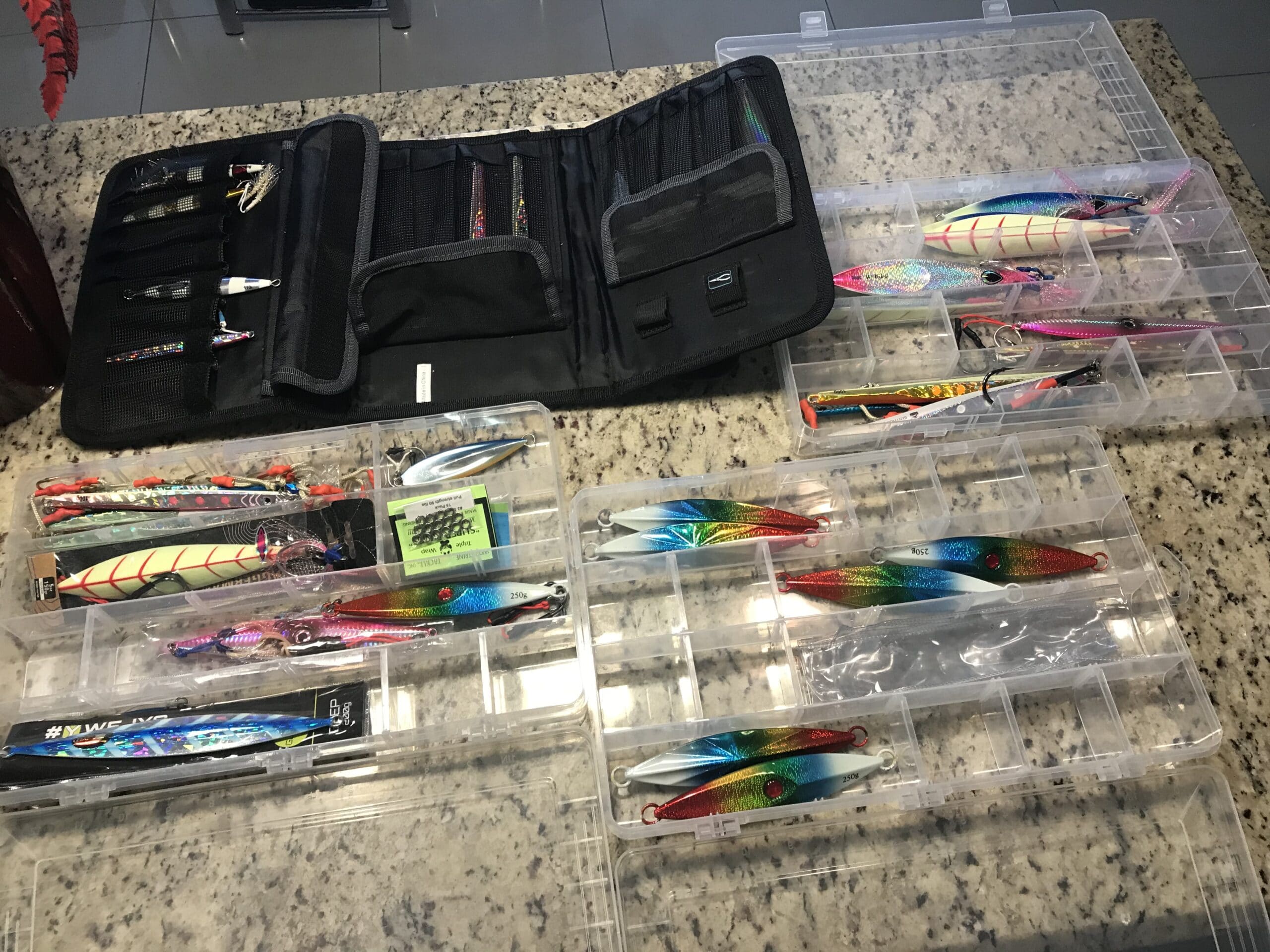
The future is calling, and your fishing methods are so 2010. Are you still looking at the tides, the phases of the moon, time of day, or type of bait? All of these factors are a great start, but what if the fish just aren’t biting?
Here’s a look at a hot new technique to practice for just that sad, rainy day. Snapper, grouper, pompano, and even yellowfin tuna can’t resist the slow pitched jig.
What is Slow Pitch Jigging?
Slow pitch jigging has become immensely popular in the last few years. It was first developed in Japan by Norihiro Sato. His success became the stuff of legends, and an entirely new concept in fishing was born.
The idea behind slow pitching is antithetical to most other types of fishing. Most of the time, we cast our bait out in the hopes of convincing our prey that it’s just like every other meal. We make our bait swim like a baitfish fleeing from the predator to make it more realistic.
The drawback of this technique is that the fish have to be out hunting. They’ve got to be hungry and looking for food. If the fish is sitting in its hideout watching fish TV, it couldn’t care less.
Slow pitching a jig is different. Imagine that grouper, watching fish TV, when all of a sudden an injured fish lands right outside its door. It takes no work at all to grab it and woof it down. The poor thing was probably going to die anyway, the grouper thinks. And like a college student lured to a seminar by the promise of free food, it just can’t resist taking the bait. Taking your bait.
The key is to make your bait appear like a wounded fish. As the technique has spread, many anglers have come up with their variations. But it’s Japanese and Australians who have perfected the slow-pitched motion that gets the hits.
The beauty of the slow pitch is that you can catch fish any time of day, any day. It’s that effective.
It’s also versatile no matter where you’re fishing. In Florida slow pitch jigging is used on offshore wrecks and reefs to lure up big groupers and snappers. You can equally use it on pelagics–many anglers hook massive tuna slow pitch jigging.
Slow Pitch Equipment
A new way of fishing requires completely new equipment. The success of the technique lies in the angler’s ability to control their jig. Spinning rods and speed jigging rods just don’t have enough control, especially in deep water.
Slow Pitch Rods

The key to the whole thing is the rod. Slow pitching rods are generally between six and seven feet long. You can get away with trying to slow pitch on an all-around or speed jig rod, but a purpose-built setup will out fish you every time.
A soft action is essential in slow jigging. To work, the angler needs to have complete control over the jig. The Japanese makers are still the kings of these sorts of rods, particularly those from Hamachi.
The best rods are sensitive and very elastic, with just the right recoil. They are made with a lot of carbon, so they’re very strong. That ability to bend and control the recoil is what helps it work the jig in the water. It shouldn’t snap back into place–it should return evenly and slowly.
Most slow pitch rods have tiny micro guides, which help you feel strikes and handle the jig. If you’re jigging a few hundred feet below the surface, you need as much sensitivity in the rod as you can muster.
Top Slow Pitch Jigging Reels

There’s nothing extraordinary about the reels involved in slow pitching, but you want to think through the details. After all, the fish is fought off the reel, not the rod.
Most anglers like a 5 or 6:1 gear ratio. The goal is to get about 40 inches of line in with every revolution of the reel. You’ve got to be able to pull in the slack line quickly. Remember, the slow pitch does not mean slow reeling.
Another factor that needs close consideration is the drag. Experts say the reel you use should be capable of producing 20 pounds of drag, even though you’ll stay in the 12 to 15-pound range on most days.
Slow Pitching Jigs

The jigs you use for this technique are specialized as well. Where speed jigs tend to be long and slender, slow pitch jigs come in many shapes and sizes. Their shape and weight distribution are designed with the effect they’ll have falling through the water in mind.
The Japanese manufacturers make a dizzying assortment of slow pitch jigs, with the weights distributed differently to create different effects.
Jigs are typically rigged with two sets of assist hooks, one on the front and one at the back. Shorter jigs can eliminate the back assist hooks if desired.
A good setup of slow pitch jigs should cover you for every situation. If you’re offshore and trying some deep drop slow pitch jigging, make sure you’ve got some larger jigs that will fall to the bottom effectively. Keeping the line vertical during jigging is vital to ensure that the jig acts like it’s supposed to.
As with all jigging, it’s a sound idea to match your jigs to the local baitfish of choice. If you’re in deep water, you might want to go with gaudier or glowing color schemes that attract more attention.
Florida Slow Pitch Jigging Techniques
The basics of slow pitch aren’t challenging to master. But to be successful, you’ve got to master a few basics and get out and practice.
The most significant difference is getting comfortable with how to hold the rod. Most genuine slow pitch rods are made to be leveraged by your forearm.
Florida slow pitch jigging is usually done offshore, over wrecks and structures. In these deep drop slow pitch jigging scenarios, you’ll want to use heavier jigs and be ready to haul up some big fish.
Tuna slow pitch jigging in open waters requires the same. If you’re in the Gulfstream or other heavy current, keep the jigs heavy and use a lighter braided line. Keep the jig vertical as it drops. Some anglers suggest casting ahead and letting the boat drift over the line. However you do it, do it to get your jig to dance just right.
It’s also crucial to understand how your jig works. It flutters and plays injured fish best during free falls. And remember, you aren’t pulling the jig up like you would with a traditional speed jig. Let the jig fall to the desired depth, then reel in the line. Follow it down as it falls with the rod, but don’t reel as the jig drops.
There’s more self-control involved in deep drop slow pitch jigging, especially when compared to standard speed jigging techniques. It’s about finessing the jig and feeling what’s happening in the water through your rod.
Final Thoughts
As with any new fishing technique, there’s no replacement for some time on the water spent with the right equipment. Nothing beats on-the-water experience, and practice makes perfect.
If you are lucky enough to live in an area with slow pitch guides who can show you the ropes, by all means, take a day out to learn a new skill. But with a bit of practice, most anglers can pick up what they need to know to get started on their own.
Once you’ve mastered the basics of the slow pitch, you can take it anywhere with you. With a good set of jigs and the right rod, you’ll have a foolproof technique for those days when no one else seems to be catching anything.
